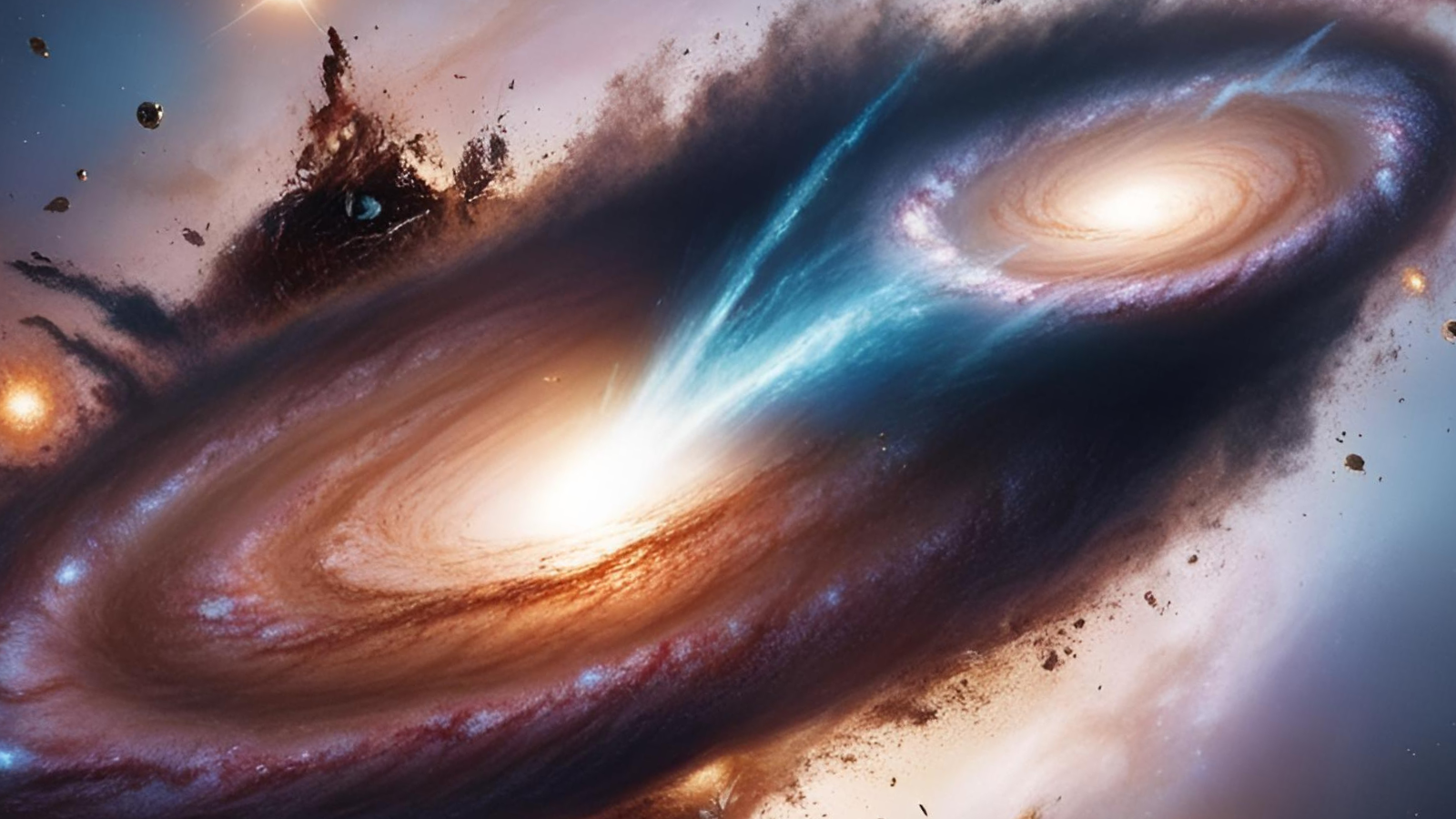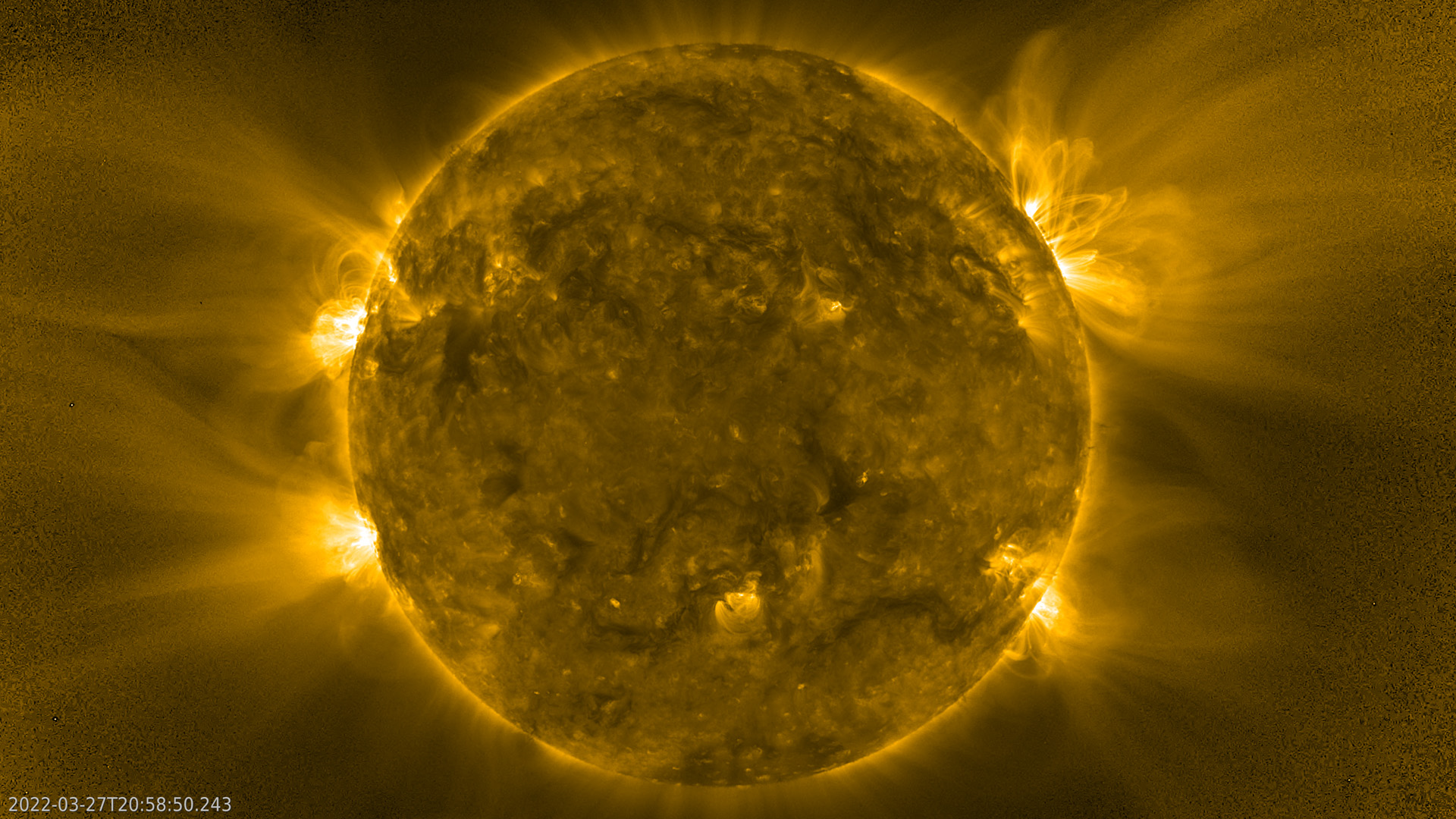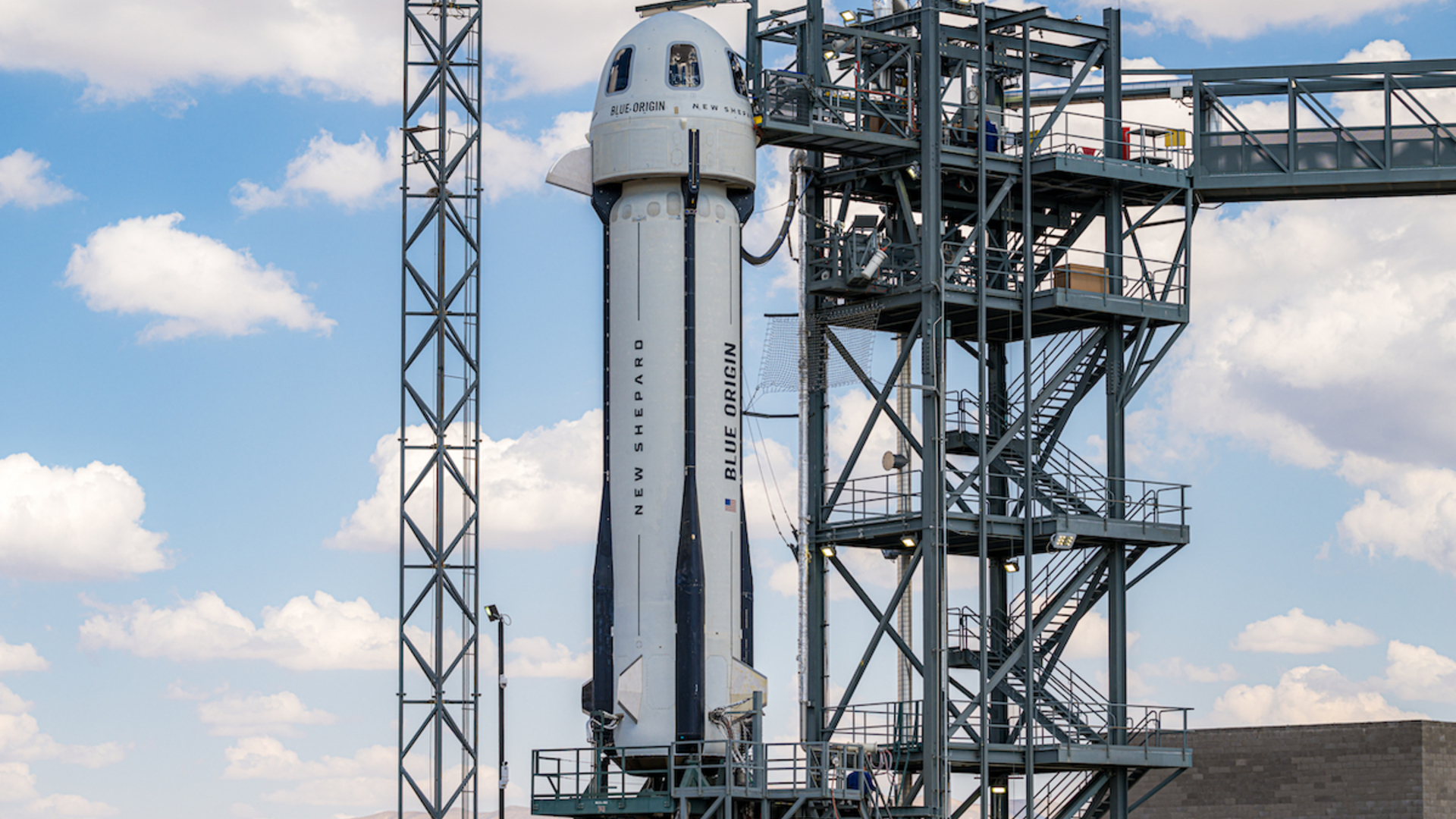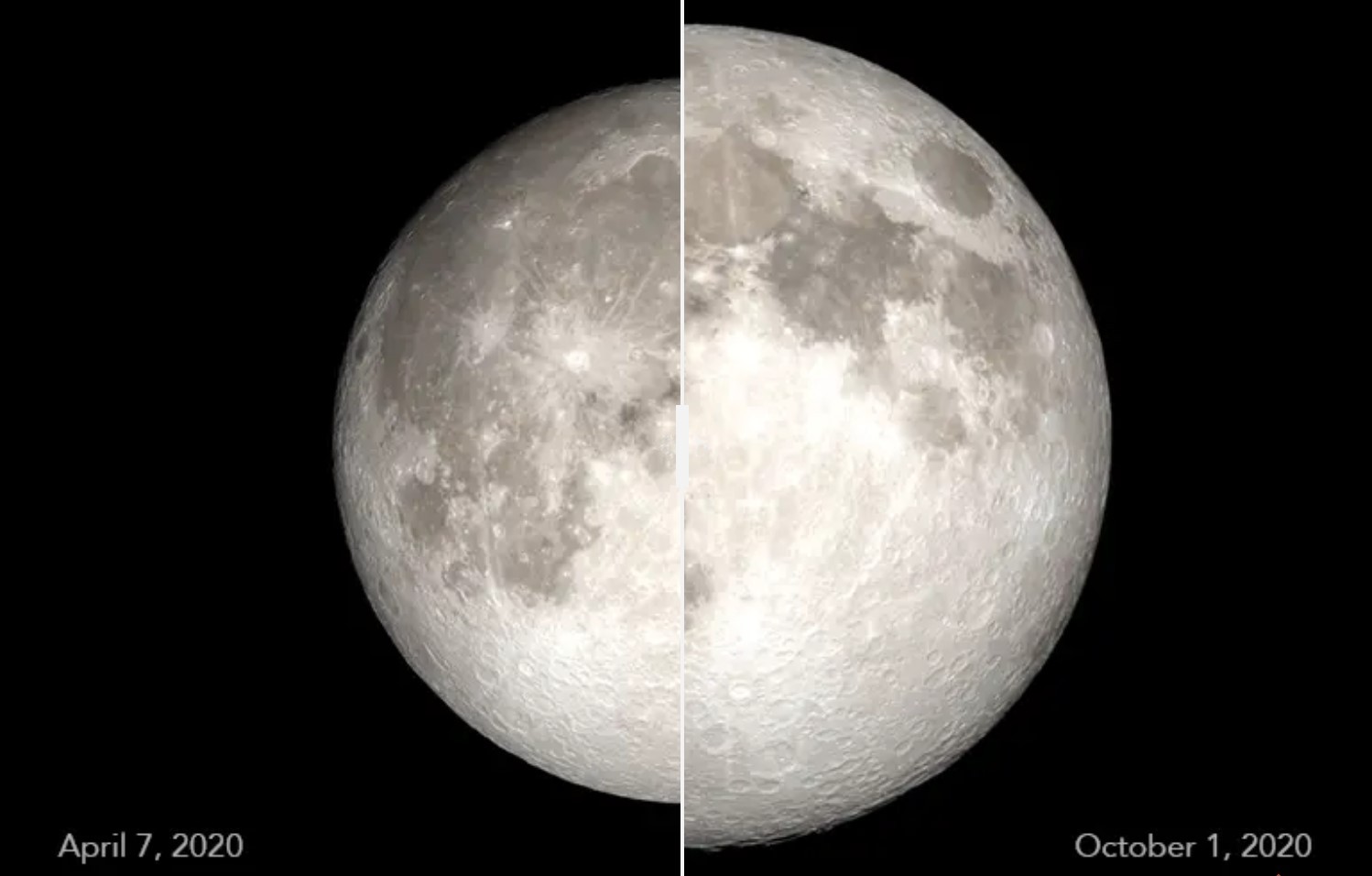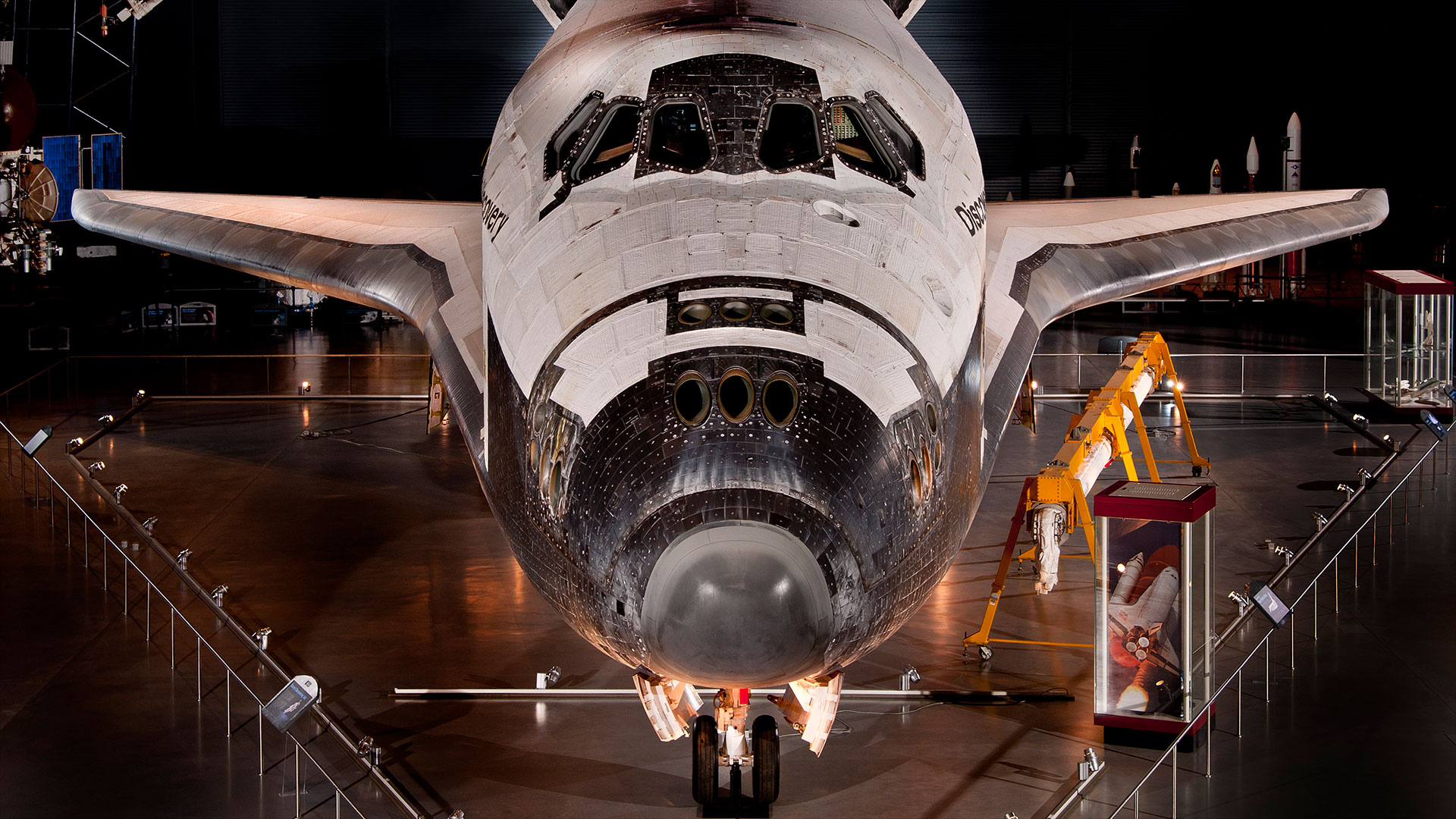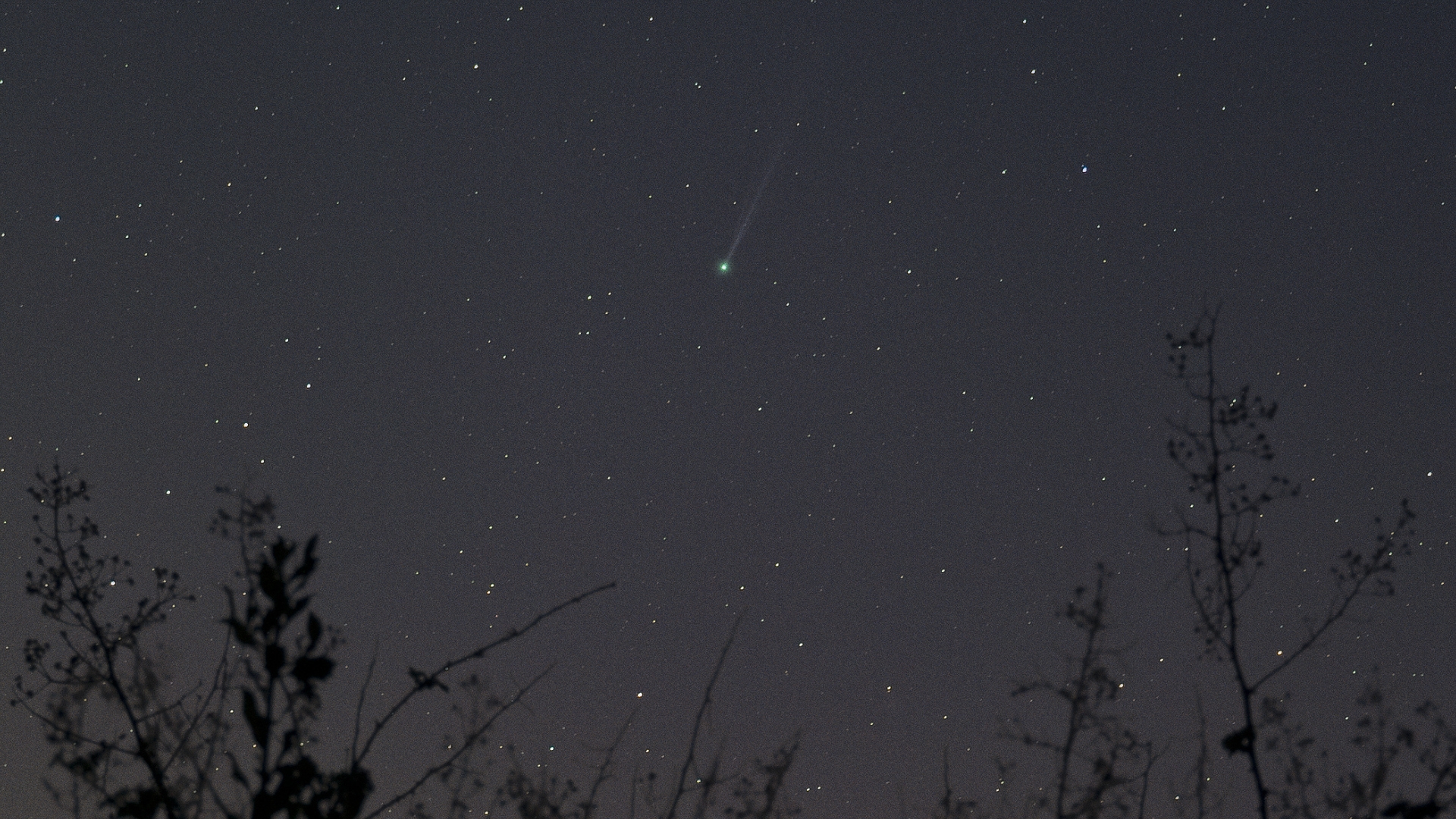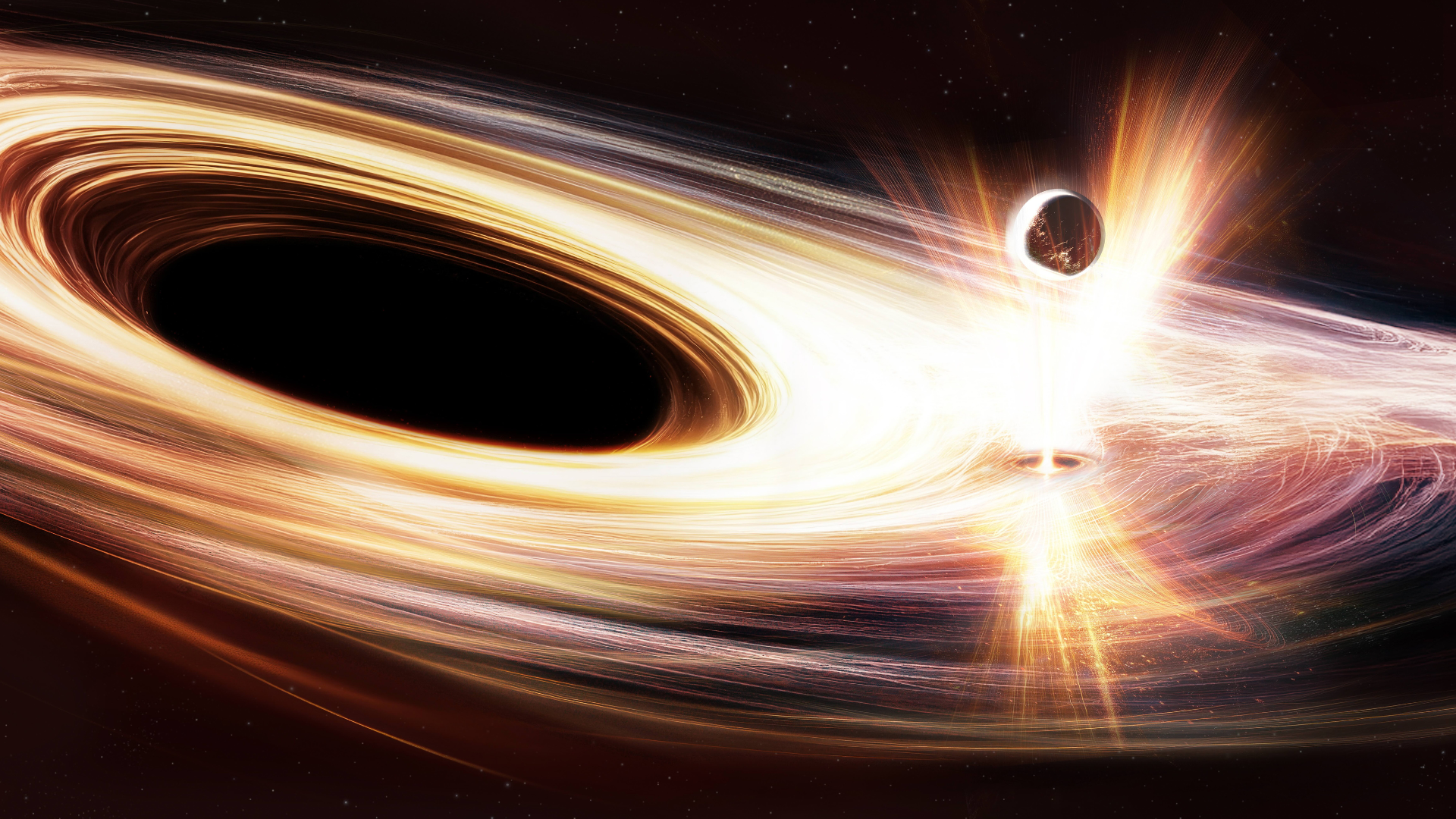James Webb Space Telescope discovers 717 ancient galaxies that flooded the universe with 1st light
93% of the newfound galaxies that Webb spotted had never been seen before.
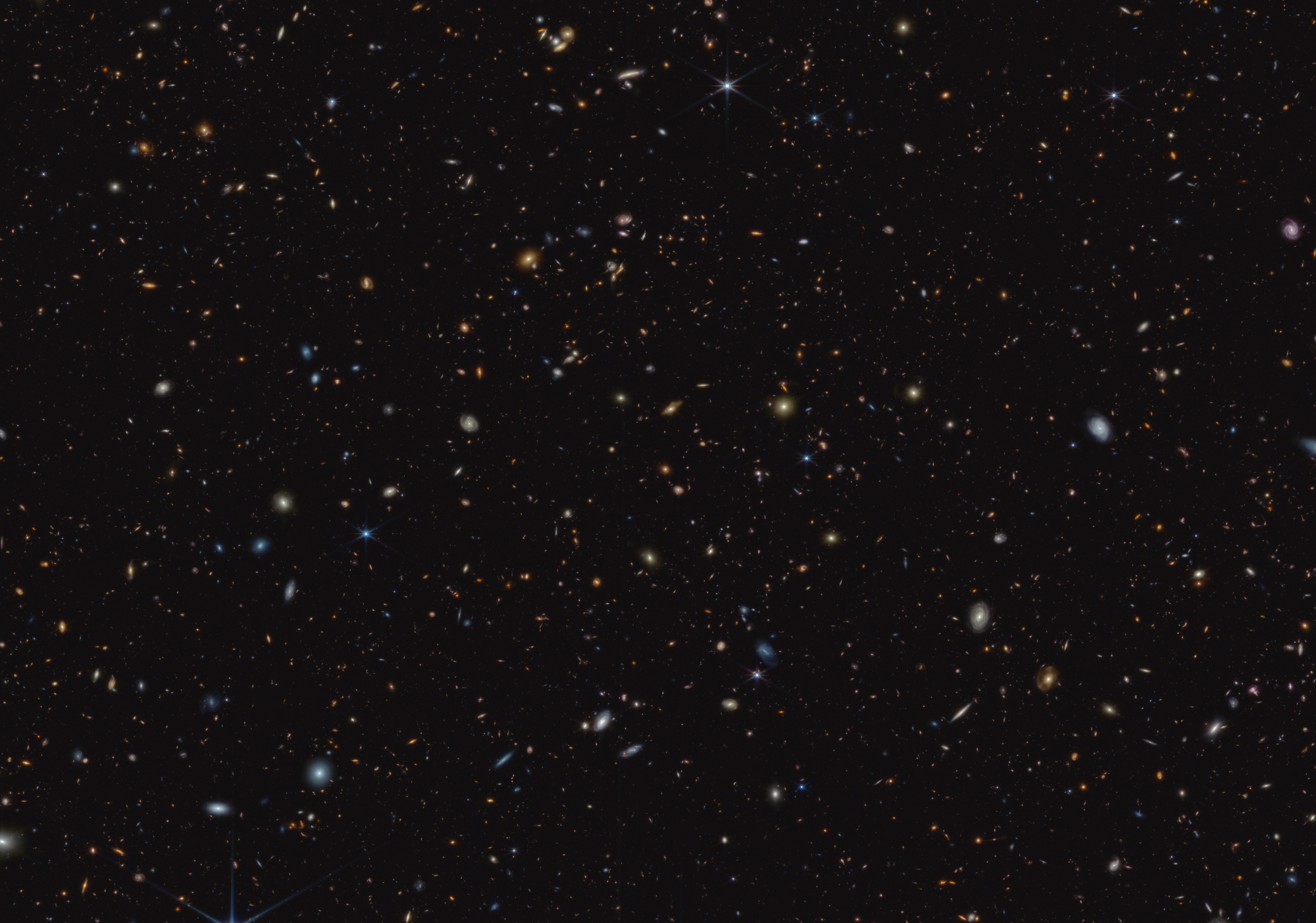
The James Webb Telescope (JWST or Webb) has unveiled hundreds of ancient galaxies that could be among the first members of the universe — a leap from only a handful that were previously known to exist at the time.
As early as 600 million years after the Big Bang, these very young galaxies flaunted complex structures and clusters of star formation, a new study reports. The study is part of an international collaboration called the JWST Advanced Deep Extragalactic Survey (JADES), which gathered a month's worth of observations from two tiny patches in the sky: One in the Ursa Minor constellation and another in the direction of the Fornax cluster. Within this region were over 700 newly discovered young galaxies that reveal with the cosmos looked like in its earliest
"If you took the whole universe and shrunk it down to a two hour movie, you are seeing the first five minutes of the movie," Kevin Hainline, an assistant research professor at the Steward Observatory in Arizona and a lead author of the new study, said while announcing the discovery on Monday (June 5) at the 242nd meeting of the American Astronomical Society being held in Albuquerque and online. "These are the galaxies that are starting the process of making the elements and the complexity that we see in the world around us today."
These new findings shed light on how the first galaxies and stars formed, creating the rich catalog of elements observed in the universe today.
Related: James Webb Space Telescope (JWST) — A complete guide
In those five minutes alone, which marks the universe to be between 370 million and 650 million years old, Hainline's and his colleagues studying Webb's data found 717 young galaxies — which turns out to be higher than previous predictions — with all of them already spanning thousands of light-years, sporting complex structures, and birthing stars in multiple clusters.
"Previously, the earliest galaxies we could see just looked like little smudges. And yet those smudges represent millions or even billions of stars at the beginning of the universe," Hainline said in a statement. "Now, we can see that some of them are actually extended objects with visible structure."
Get the Space.com Newsletter
Breaking space news, the latest updates on rocket launches, skywatching events and more!
Together, the two regions used in this study are referred to as GOODS-South, an acronym for The Great Observatories Origins Deep Survey, and have been extensively studied by nearly all major space telescopes, including Hubble, the Chandra X-Ray Observatory and NASA's now-retired Spitzer.
Despite this previous scrutiny, 93% of the newfound galaxies that Webb spotted during JADES had never been seen before.
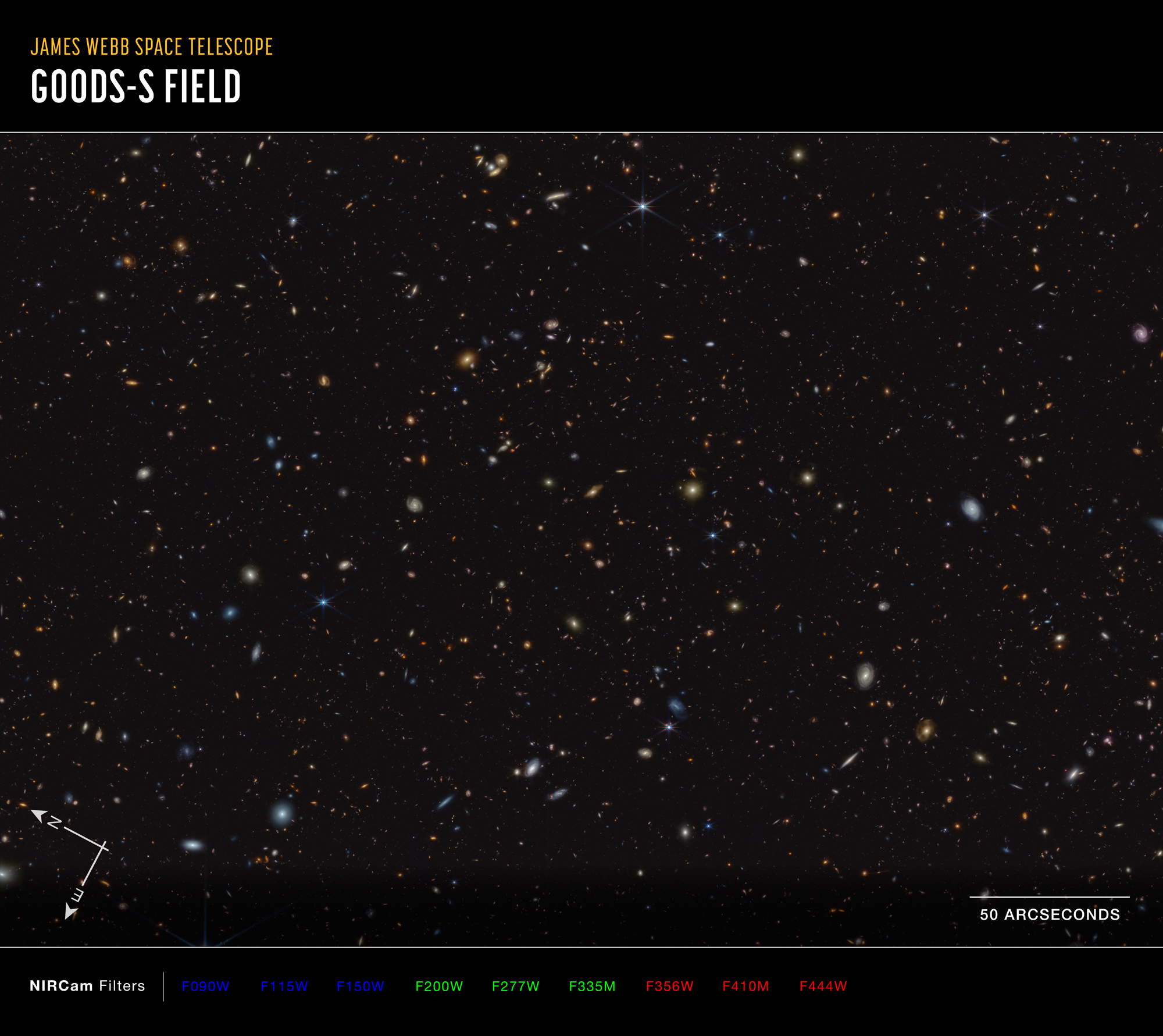
"What we were seeing before were just the brightest, most extreme examples of bright galaxies in the early universe," Hainline said during his presentation on Monday. "Now we are really probing down to more normal, everyday galaxies in a turbulent young universe."
Precisely how that chaotic, very dusty environment cleared up to become the transparent cosmos we see today has long been debated. A leading theory is that this phase of evolution of the universe, called the Epoch of Reionization, occurred some 400,000 years after the Big Bang, when the first generation of stars — thought to be 30 to 300 times our sun's mass and millions of times more bright — formed and flooded the opaque universe with its first light.
That ultraviolet starlight reionized the universe by splitting its abundant hydrogen atoms into protons and electrons, a process that lasted until one billion years after the Big Bang. However, few astronomers say outflows from supermassive black holes, similar to the one that resides in the heart of our Milky Way, could have triggered the escape of ultraviolet radiation from galaxies and thus played a more important role in cosmic evolution than previously thought.
Now, a second team from the JADES program that has been studying galaxies that existed between 500 to 850 million years after the Big Bang, or between five to eight minutes of the two-hour movie describing the universe, thinks it has an answer to the long-standing question.
"In this next scene of the universe, we are starting to actually see the impact of galaxy formation on the composition of the large scale universe," Ryan Endsley, a postdoctoral researcher at the University of Texas who led the second study, said at the news conference on Monday. "Galaxies in the very early universe were just far more chaotic in general in how they formed stars."
Endsley's team studied the signs of star formation in those very early galaxies, which provided insight into how starlight ionized the gas within those galaxies. The team found that one in six galaxies at the time showed extreme line emissions in the galaxy's spectra, a feature that atoms ionized by starlight radiate when they have cooled down and combined with other molecules.
Those emission lines are evidence that early galaxies were actively birthing stars, which then pumped "torrents of ultraviolet photons" into their respective galaxies. This way, the universe's early stars became the main drivers of cosmic reionization, Endsley said.
"These extreme emission lines are actually relatively common in the very early universe," he said during his presentation. "Almost every single galaxy that we are finding shows these unusually strong emission line signatures indicating intense recent star formation," he added in the statement. "These early galaxies were very good at creating hot, massive stars."
From the same emission lines, Endsley's team also inferred that galaxies in the early universe birthed stars in short bursts followed by quiescent periods.
"All of a sudden you would have tens of suns worth of solar masses being assembled all at once in these early galaxies," Endsley told reporters at the news briefing on Monday. "That's really important for our understanding of how reionization happened because these hot massive stars were very efficient producers of these ultraviolet photons that we needed in order to ionize all the hydrogen in the early universe."
Join our Space Forums to keep talking space on the latest missions, night sky and more! And if you have a news tip, correction or comment, let us know at: community@space.com.

Sharmila Kuthunur is a Seattle-based science journalist focusing on astronomy and space exploration. Her work has also appeared in Scientific American, Astronomy and Live Science, among other publications. She has earned a master's degree in journalism from Northeastern University in Boston. Follow her on BlueSky @skuthunur.bsky.social
-
rod "As early as 600 million years after the Big Bang, these very young galaxies flaunted complex structures and clusters of star formation, a new study reports. The study is part of an international collaboration called the JWST Advanced Deep Extragalactic Survey (JADES), which gathered a month's worth of observations from two tiny patches in the sky: One in the Ursa Minor constellation and another in the direction of the Fornax cluster. Within this region were over 700 newly discovered young galaxies that reveal with the cosmos looked like in its earliest."Reply
JADES is getting interesting. The Cosmos in its Infancy: JADES Galaxy Candidates at z > 8 in GOODS-S and GOODS-N, https://arxiv.org/abs/2306.02468, 04-June-2023. "We present a catalog of 717 candidate galaxies at z>8 selected from 125 square arcminutes of NIRCam imaging as part of the JWST Advanced Deep Extragalactic Survey (JADES)."
My observation. No metal free gas or the pristine gas from postulated BBN is seen that is said to fill the early universe, dust is reported in JADES paper and more study to show metallicity. Cosmology calculators show light-time of some 13 Gyr or a bit more for z=8.0 and age of universe at z=8, 0.646 Gyr. Some other discussions on forums about JADES too and metal content, https://forums.space.com/threads/james-webb-space-telescope-spies-earliest-complex-organic-molecules-in-the-universe.61665/ -
Atlan0001 Still waiting to see the precursor Milky Way at 600 million years after the Big Bang and the Milky Way's whole evolutionary, revolutionary, light trail from there, then, to here, now.Reply
I would be willing to bet if a ship could travel fast enough it would trail the Milky Way from here, now, clear to the horizon there, then, at a distance from the ship of about 10 to 13 billion-odd light years (oops a circling around). Or maybe it couldn't actually (so no bet). Probably it wouldn't, couldn't, hold . . . couldn't stay . . . the course, into such a tight, and ever tighter and tighter, turning curvature it would have to take into that vortex to keep the Milky Way's light time history trail of crumbs lined up in the rearview mirror. The ship would literally be tossed, thrown, sideways into gravity's outland infinity and out of the Milky Way's spacetime universe altogether into some other. Actually, where it would end up in any case. -
rod Reply
"Still waiting to see the precursor Milky Way at 600 million years after the Big Bang and the Milky Way's whole evolutionary, revolutionary, light trail from there, then, to here, now."Atlan0101 said:Still waiting to see the precursor Milky Way at 600 million years after the Big Bang and the Milky Way's whole evolutionary, revolutionary, light trail from there, then, to here, now.
I would be willing to bet if a ship could travel fast enough it would trail the Milky Way from here, now, clear to the horizon there, then, at a distance from the ship of about 10 to 13 billion-odd light years (oops a circling around). Or maybe it couldn't actually (so no bet). Probably it wouldn't, couldn't, hold . . . couldn't stay . . . the course, into such a tight, and ever tighter and tighter, turning curvature it would have to take into that vortex to keep the Milky Way's light time history trail of crumbs lined up in the rearview mirror. The ship would literally be tossed, thrown, sideways into gravity's outland infinity and out of the Milky Way's spacetime universe altogether into some other. Actually, where it would end up in any case.
Atlan0101, as I understand Big Bang cosmology, the large redshift *galaxies* are much smaller sizes and masses than M31 I see in my telescopes. The tiny evolved into the big over more than 13 Gyr in cosmology :) However, redshifts of 1.4 or larger, in GR math (cosmology calculators will demonstrate this), show space expanding faster than c velocity and comoving radial distances so far away, we cannot observe them today on Earth. Hence, we do not know how any of these *early tiny galaxies* evolved along their comoving radial distances (or even if any still exist out there, far, far away). Something I find commonly not pointed out to the public IMO, at least not clearly. -
Torbjorn Larsson Reply
That's not what these surveys were looking at. But the earlier cosmic background radiation is a flawless observation of the early metal free big bang nucleosynthesis gas releasing photons.rod said:My observation. No metal free gas or the pristine gas from postulated BBN is seen that is said to fill the early universe, dust is reported in JADES paper and more study to show metallicity. -
Torbjorn Larsson Reply
I'm not sure what you are getting at. Since Milky Way is locally surrounding us, the early photons you want to see from 13 billion years ago are now 40 billion lightyears away.Atlan0101 said:Still waiting to see the precursor Milky Way at 600 million years after the Big Bang and the Milky Way's whole evolutionary, revolutionary, light trail from there, then, to here, now. -
Torbjorn Larsson Reply
Galaxies that we can observe, and those are currently redshifted at 11 or larger, are not showing space expansion as such. Possibly you are referring to that really distant galaxies have photons losing ground to space expansion early on. The expansion rate has changed over time.rod said:However, redshifts of 1.4 or larger, in GR math (cosmology calculators will demonstrate this), show space expanding faster than c velocity and comoving radial distances so far away, we cannot observe them today on Earth.
Remember that we can see photons that have a redshift of 1,000, the microwave background radiation, but farther back than that the early plasma captured all light. In principle there is a largest redshift distance, z = infinity, but we can't see that. -
Atlan0001 If the Big Bang Horizon blows, spews, nothing but microcosmic photons, nothing but light, at the speed of light and time, then it is no wonder that the universe is loaded down with light streams running macrocosmic light time histories down every corridor and around every corner of it. All light time history crossroads won't reach to every single crossroad point of a 4-dimensional chessboard multiverse regardless of some thinking we should be capable of observing all of it, all of the multiverse universe, all at once at a every center-0-point of it . . . most especially a centric Earth so centrically divine in the universe. Since we observe our universe 1-dimensionally, even stretching to 2-dimensionality, they say that that single-sided 2-dimensional map, flattened cones of light time histories, is the whole territory mapped, if not the whole territory itself observed and observable. We observe no more than a local-relative finite part of it . . . and even then, the only current, concurrent, horizon observable is the Horizon we are quantum entangled in and with ("spooky action at a distance").Reply
Few have minds stretched far enough to realize that the map can never be, and will never be, the territory.
And, though the collapsed constant of Horizon uses the infinitely vast resource of the infinity of universes closed up to it, in it, behind it, beyond the Horizon, influentially creatively, it is no more or less than the Planck / Big Bang / Black Hole Horizon. And it isn't any 40-billion light years away. The collapsed constant (the cosmological constant (/\/)) -- the absolute collapse of Complexity and Chaos in Horizon -- is and will be a collapse 14-billion light years, 14-billion years both past (into future) and future (into past), away from 0-point center anywhere and everywhere in infinity . . . and that every 0-point center is quantum entangled in and with (per Einstein's mind's eye trip to the Horizon, and per Hawking's "Grand Central Station" -- and Station clock, exactly the same place just viewed, pictured, differently). It doesn't go away from point of collapse, neither as the Planck Horizon down and in, nor as the Big Bang Horizon up and out, one and the same constant of collapsing, collapsed, Horizon of Complexity and Chaos down and in and up and out.
-----------------------------
"Brevity may the soul of wit, but repetition is the heart of instruction." -- Gen. George S. Patton, Jr. -
rod Other sites reporting on the 717 *early galaxies* and JADES. JAMES WEBB SPACE TELESCOPE UNCOVERS HUNDREDS OF GALAXIES IN EARLY UNIVERSE, https://skyandtelescope.org/astronomy-news/james-webb-space-telescope-uncovers-hundreds-of-galaxies-in-early-universe/Reply
"There’s a lot more to be gleaned from the JADES sample as JWST continues its observations, such as a better understanding of the galaxies’ shapes and sizes. In addition, while stars (and associated dust) dominated the press conference, these galaxies’ central black holes are waiting their turn for center stage. “I think that there are some really exciting examples of active supermassive black holes that people didn't necessarily expect to exist in this very early episode of the universe,” Endsley says. “It is something we really need to start taking into consideration as we move forward.” In the meantime, JWST has already painted a chaotic picture of the universe’s earliest years."
As I said before, JADES is getting interesting. The Cosmos in its Infancy: JADES Galaxy Candidates at z > 8 in GOODS-S and GOODS-N, https://arxiv.org/abs/2306.02468, 04-June-2023. "We present a catalog of 717 candidate galaxies at z>8 selected from 125 square arcminutes of NIRCam imaging as part of the JWST Advanced Deep Extragalactic Survey (JADES)."
My observation. No metal free gas or the pristine gas from postulated BBN is seen that is said to fill the early universe, dust is reported in JADES paper and more study required apparently to show metallicity. Cosmology calculators indicate light time of some 13 Gyr or a bit more for z=8.0 and age of universe at z=8, 0.646 Gyr. At some point, BB cosmology must show that such gas clouds postulated in theory, were indeed in nature. This includes H in the CMBR, He, and pristine gas clouds for the cosmic dark ages postulated in BB model before Population III stars formed, including showing Population III stars as real, not just simulation models. Using my telescopes, I can see the Galilean moons moving around Jupiter. I am waiting for the definitive paper and report showing the pristine gas clouds that are considered metal free. JADES is not showing this yet apparently. -
Elroch Reply
This is a common misunderstanding caused by misleading discussion of this by those who should know better. Misleading "faster than c" velocities are produced by incorrectly adding incremental velocities in different frames. Correctly adding the velocities keeps the answer lower than c. The existence of a redshift value (like your z=1.4) means that EM radiation is visible from the source! One remote object called GN-Z11 has z=10.957. The CMB is a view of the ionised gas that filled the Universe before the time of last scattering (which most ions recombined into atoms and molecules) and has z=1100. Still visible, despite the source being a misleading "43 billion light years away" by inconsistently adding distances in comoving frames.rod said:"Still waiting to see the precursor Milky Way at 600 million years after the Big Bang and the Milky Way's whole evolutionary, revolutionary, light trail from there, then, to here, now."
Atlan0101, as I understand Big Bang cosmology, the large redshift *galaxies* are much smaller sizes and masses than M31 I see in my telescopes. The tiny evolved into the big over more than 13 Gyr in cosmology :) However, redshifts of 1.4 or larger, in GR math (cosmology calculators will demonstrate this), show space expanding faster than c velocity and comoving radial distances so far away, we cannot observe them today on Earth. Hence, we do not know how any of these *early tiny galaxies* evolved along their comoving radial distances (or even if any still exist out there, far, far away). Something I find commonly not pointed out to the public IMO, at least not clearly. -
Unclear Engineer I think the distinction between what we are seeing now, from Earth, and where the objects that emitted that light are now, gets confused with where those objects were when they emitted the light we are seeing now.Reply
Because we think we can see what is now microwave radiation emitted back at the time when atoms formed and allowed photons to travel freely through space, it seems that we should be able to detect radiation that was emitted later in time than 13.4 billion years ago, when the microwave background is thought to have been released.
The potential catch in that idea is whether the atomic hydrogen blocked photons of various wavelengths to the extent that they would have blocked our view from here and now. The popular media gets that all messed up, talking about how the "dark ages" before stars developed were caused by "hydrogen fog" until the hydrogen was reionized (back to the state assumed before the CMBR was released, which was another reason photons from then aren't visible to us here and now). Yes, the universe is thought to have expanded greatly between the times the CMBR was released and the times that the stars reionized the hydrogen.
But, realistically, what photons of what wavelengths should be visible to us now here on Earth from the processes that were occurring between the formation of hydrogen atoms and the formation of stars to reionize those hydrogen atoms? That is what we really want to be able to "see" with out telescopes, which will need to be able to see a very wide range of electromagnetic wave frequencies to cover that period of time, when the wavelengths were stretched by a factor up to than 1,100 between the time of emission and the time we are trying to observe them now.
